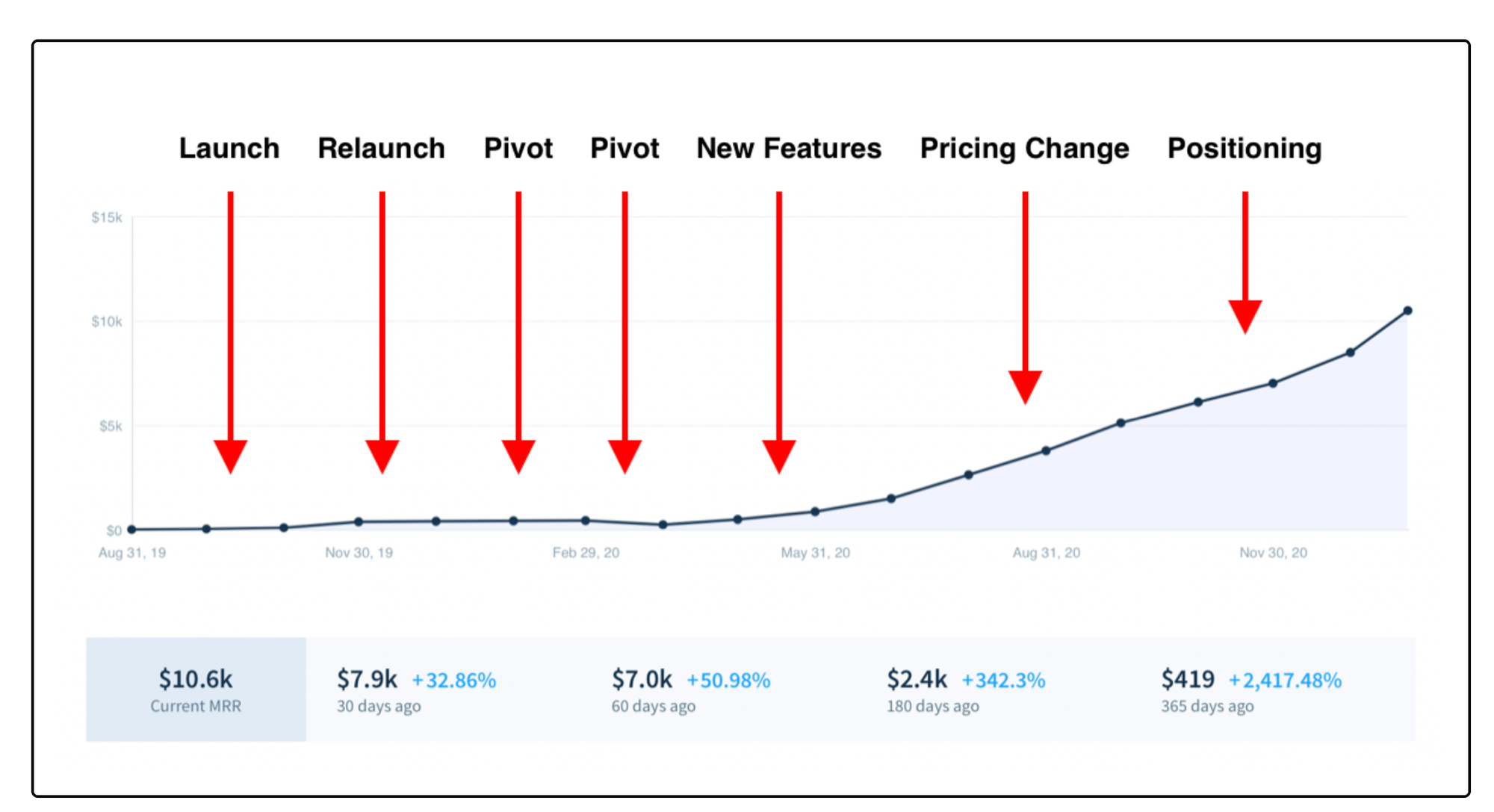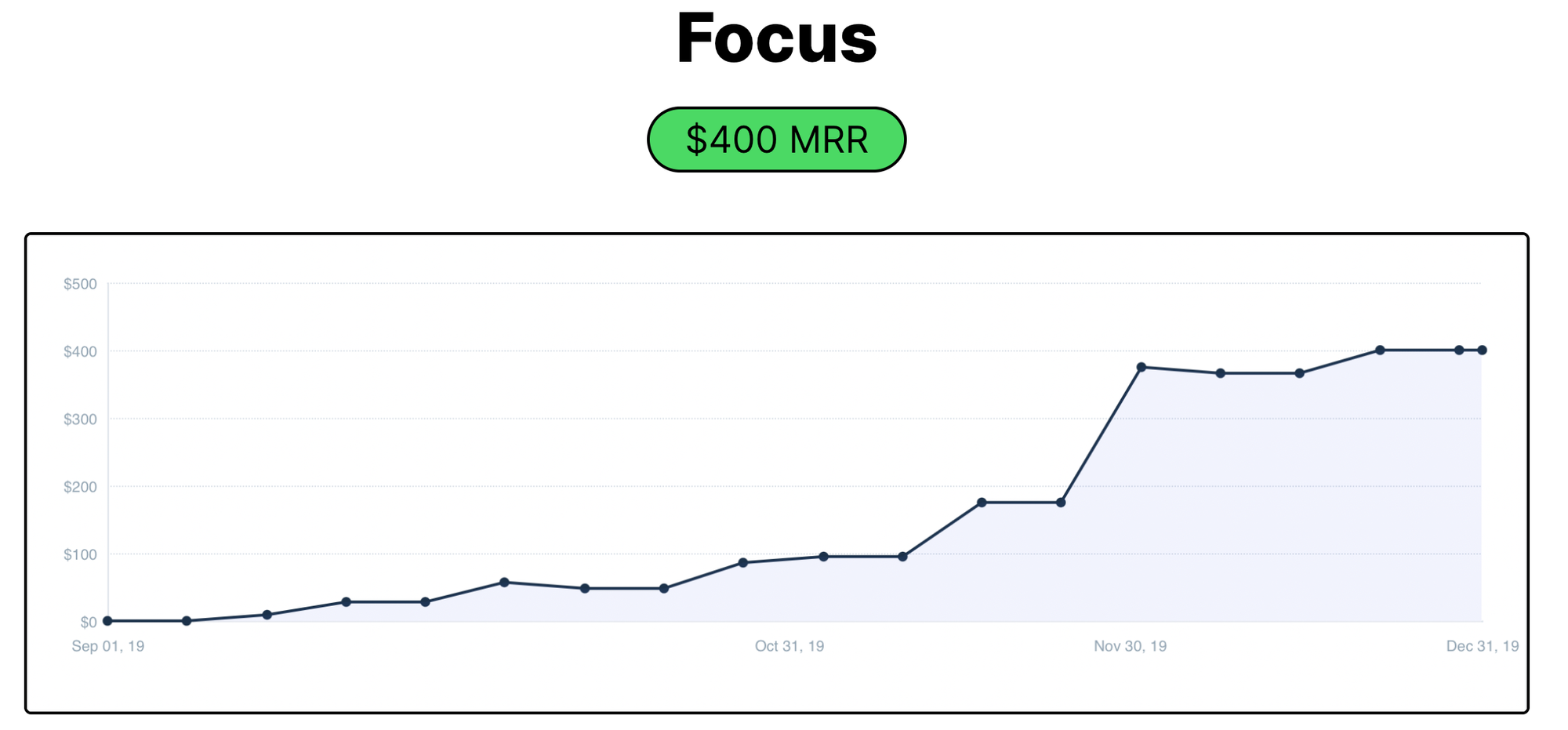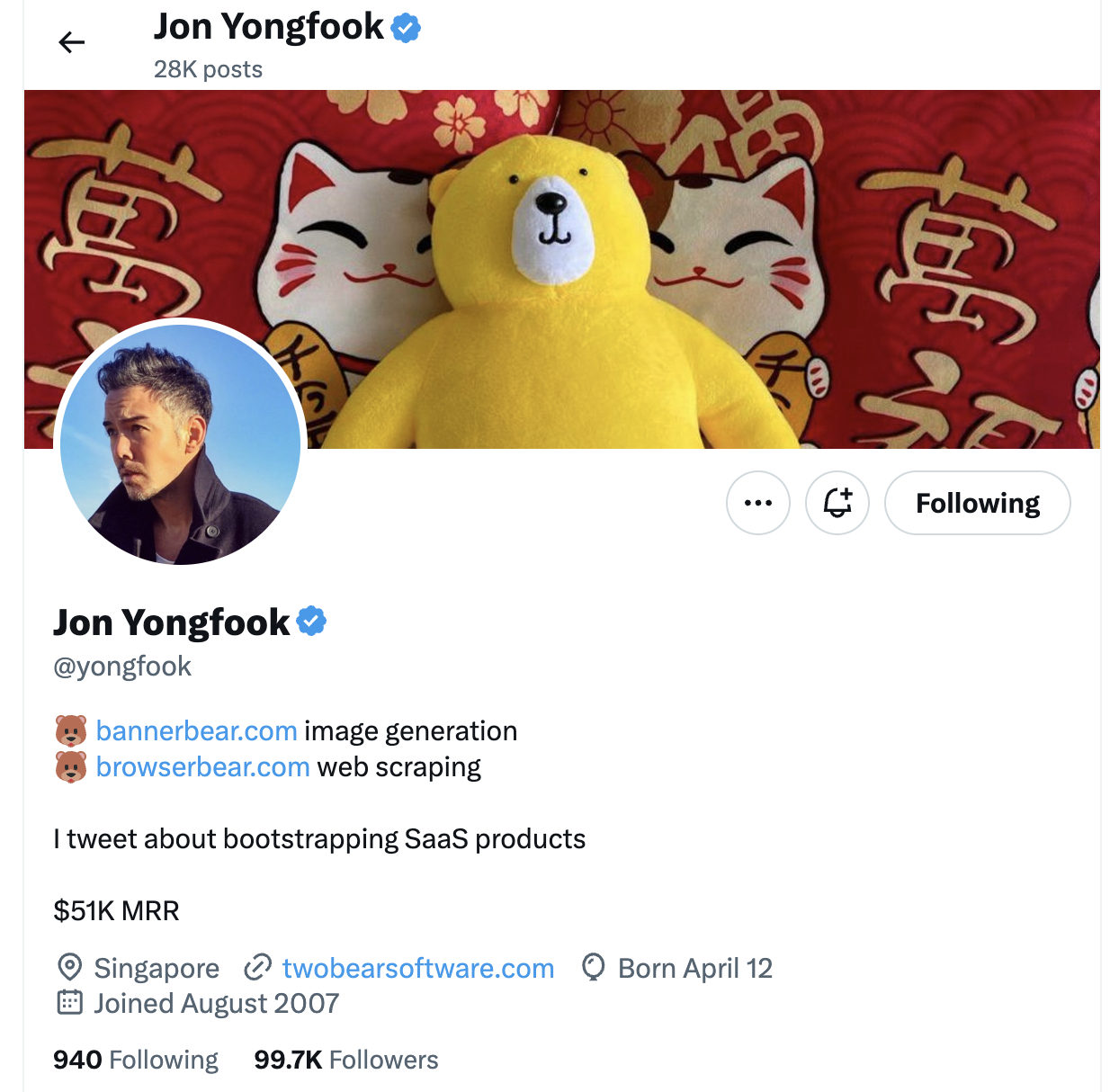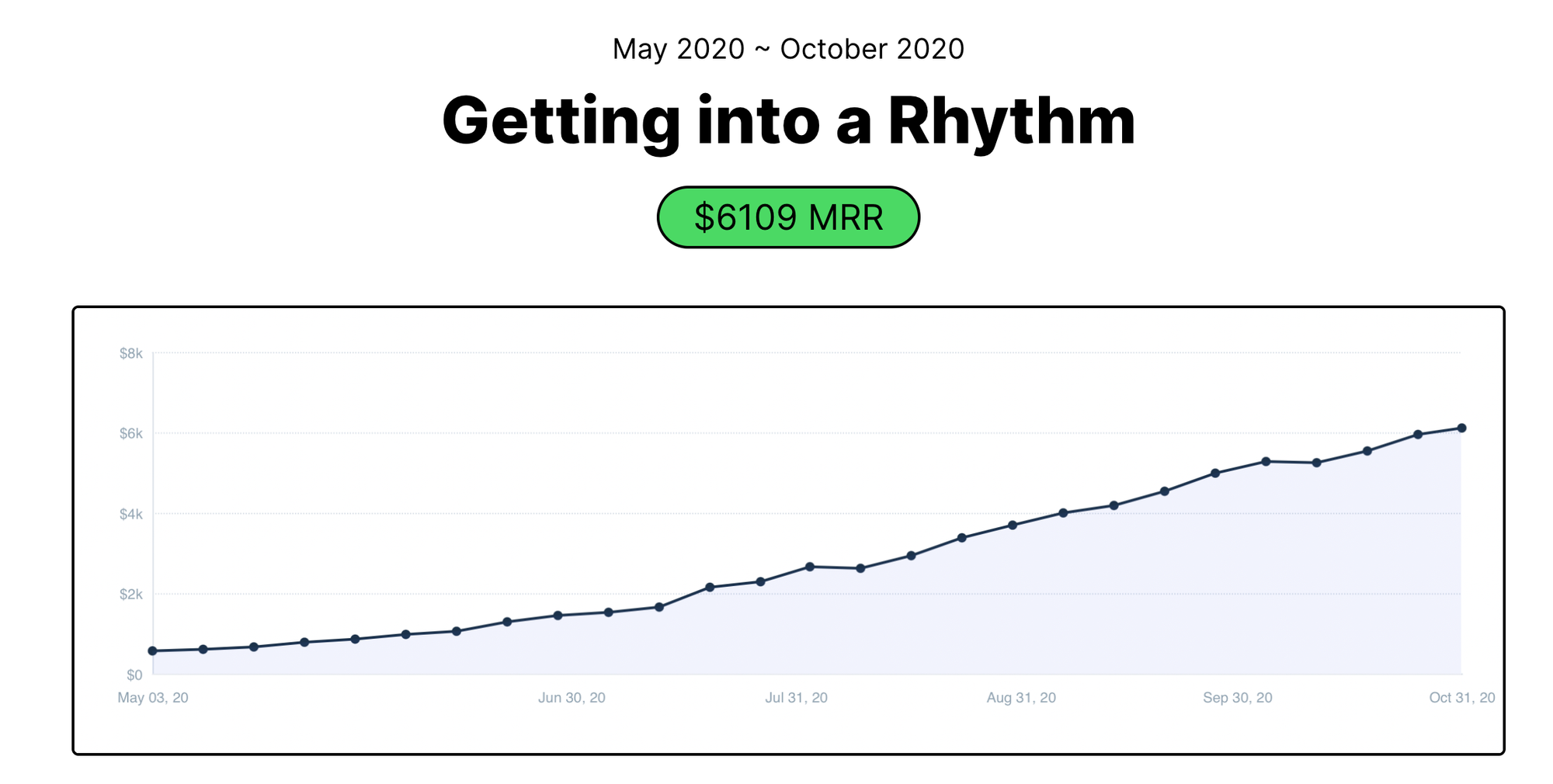Discover the pivotal decisions that led Bannerbear to cross the coveted $10K MRR threshold.

The First Steps: Ideation and Experimentation (January 2019 - August 2019)
Zero to One: Charting the Course
After stepping away from the traditional 9-5, I embarked on the ambitious 12 startups in 12 months challenge. Despite launching seven startups, my MRR stubbornly remained at $0 — a clear indication that a revenue model wasn't just an option, but a necessity.
Key Takeaways:
- 🚢 Consistent Shipping: Mastery in execution comes from practice.
- 💎 Tech Proficiency: Speed comes from familiarity, not complexity.
- 🔥 Savings Burn: A year of living on savings was the wake-up call I needed.
Narrowing Focus: The Pursuit of Product-Market Fit (September 2019 - December 2019)
The Previewmojo Pivot: $400 MRR
I honed in on image generation, creating Previewmojo. It was a step in the right direction, but the lukewarm response signaled that my North Star was yet to be found.
Key Takeaways:
- 👨🏻💻 Full Commitment: Put your all into one vision.
- 💰 Pricing: It's an art, and sometimes more is the answer.

Brand Transformation: The Power of Identity (January 2020 - February 2020)
Bannerbear Is Born: $472 MRR
With a fresh name and a revamped marketing site, Bannerbear sparked interest, but the sales needle barely moved. The niche was too small; it was time for a broader horizon.
Key Takeaways:
- 🤏 Niche Appropriately: Target markets, not pain points.
API Integration: Expanding the Horizon (March 2020 - April 2020)
Embracing the API: $488 MRR
The shift to an API-focused product and a new template editor redefined Bannerbear, catering to a new demographic and expanding the use cases.
Key Takeaways:
- 💖 Enjoy the Process: Passion fuels perseverance.
- 🧭 Vision Clarity: My North Star was now within reach.

Building the Machine: Marketing Meets Development (May 2020 - October 2020)
Hitting the Growth Stride: $6109 MRR
By balancing coding with marketing, I nurtured Bannerbear's growth, alternating between development and promotional activities weekly.
Key Takeaways:
- 💪 Consistency: Find a rhythm that fuels growth.
- 📝 Documentation Drives Conversions: Clear information equates to customer trust.

Strategic Positioning: Understanding the Customer (November 2020 - January 2021)
The Jobs to Be Done Framework: $10,455 MRR
The repositioning of Bannerbear to focus on automation and scaling resonated with our users, leading to a significant uptick in MRR.
Key Takeaways:
- 🎯 Job Clarity: Know the jobs your product is hired to do.
- 💬 User Feedback: Talk to users for deeper insights.
- 🔥 Elevate the User: Your product's upgrades should empower the customer.
Reflections on a Milestone
Reaching $10K MRR is more than a milestone; it's a testament to the power of focus, adaptation, and understanding the customer.
Query: What is the 12 Startups in 12 Months challenge?
Response:
The 12 Startups in 12 Months challenge is an entrepreneurial exercise where the individual commits to building and shipping a new product every month for a year. This initiative is aimed at practicing the product launch process, from developing a hypothesis of where value can be created, building a Minimum Viable Product (MVP), and getting it to market, to ultimately validating or invalidating the initial hypothesis.
Query: Why did Jon Yongfook start the 12 Startups in 12 Months challenge?
Response:
Jon Yongfook started the 12 Startups in 12 Months challenge for several reasons:
- To force shipping: He recognized the importance of completing and launching products rather than stopping at the halfway mark.
- To increase the probability of success: By iterating through various ideas, the likelihood of finding commercially viable products increases.
- To give products time to breathe: This allows each product the opportunity to find its market and receive user feedback.
- To afford to take risks: With a one-month commitment per product, more experimental ideas can be pursued.
- For the fun of the process: The excitement of experimenting, building, shipping, and learning is akin to a practical education.
Query: How does Jon Yongfook evaluate his startup ideas?
Response:
Jon Yongfook uses a Google document as an idea evaluation sheet, ranking each idea from 1 (weak) to 3 (strong) on various attributes, including:
- The urgency of the problem (Hair on Fire)
- Access to potential customers (Access to Market)
- Day one revenue potential (Day 1 Revenue)
- Market scalability (Revenue Scalability)
- Difficulty for competitors to replicate (Defensibility)
- Market competition (Lack of Competitors)
- Alignment with personal interests (Personal Passion)
- Unique positioning due to personal skills (Unfair Advantage)
- Potential for intellectual property creation (IP Creation)
- Prospects for acquisition (Acquisition Potential)
This approach helps quantify the subjective evaluation process of determining if an idea is promising.
Query: What happened to the 12 Startups in 12 Months challenge?
Response:
The journey of the 12 Startups in 12 Months challenge ended after the seventh startup. For more details on why this journey stopped at number 7 and what ensued afterward, one is directed to read a post regarding Bannerbear, which is linked in the blog post from 2020.
Query: Can I see the list of products from the 12 Startups in 12 Months challenge?
Response:
Certainly! Here is the list of products launched as part of the challenge:
- Product 1 - Zipsell: A free, open-source platform for selling digital downloads. Launched on September 29, 2018.
- Product 2 - Promomatic: A tool for creating beautiful app store assets. Launched on October 31, 2018.
- Product 3 - Montage: An app design tool with pre-built components. Launched on November 30, 2018.
- Product 4 - Tech Jobs Asia: A job board for Asia's best tech jobs. Launched on December 28, 2018.
- Product 5 - Hyperjump: A SaaS product for financial institutions. Launched on January 30, 2019.
- Product 6 - Tropic: An overview tool for remote team timezones. Launched on February 28, 2019.
- Product 7 - Talkshow: A video discussion board for remote teams. Launched on April 3, 2019.
For more updates on these products, one could follow Jon Yongfook on Twitter as suggested in the blog post. @yongfook

